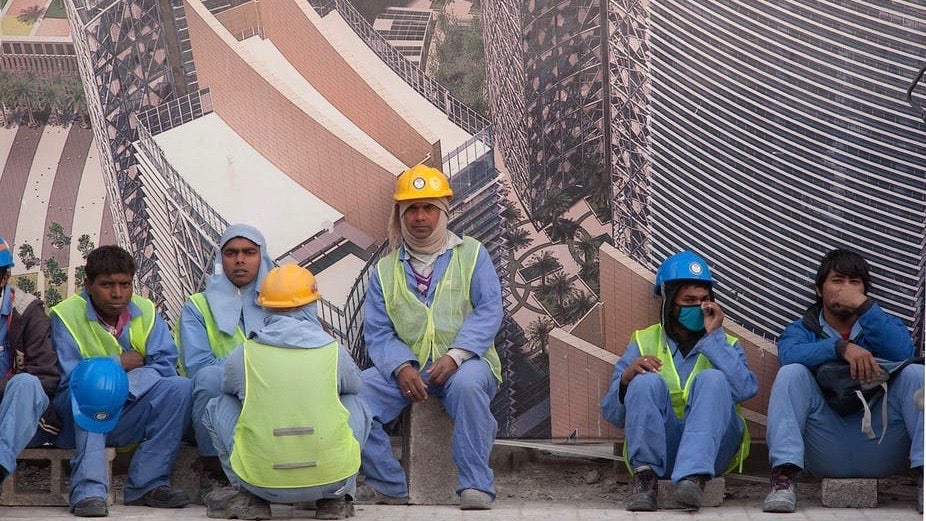Summary
The COVID-19 pandemic has already had a significant negative impact on the Bangladesh economy. Exports and imports have fallen significantly, especially in the garment sector. The unemployment rate is the highest in its history, which has deepened poverty and income inequality. The Bangladesh government has taken several initiatives to mitigate the adverse effects of the pandemic. Public health directives, different social safety net programmes and stimulus packages are the main instruments to combat the pandemic. The success of mitigating the outbreak depends on these packages being implemented efficiently and transparently.
The past decade’s steady economic growth and the remarkable achievement in poverty eradication have provided the fillip for Bangladesh to move into middle-income country status by 2024. However, this could be derailed by the COVID-19 pandemic. Bangladesh’s economic growth rate was 8.2 per cent in 2019. The World Bank estimates a gross domestic product (GDP) growth of between two and three per cent for the country in 2020. The International Monetary Fund and the Asian Development Bank (ADB) have predicted the economic growth to be 3.8 per cent and 4.5 per cent respectively, whereas their initial growth projection was about eight per cent for 2020. Recently, Bangladesh’s government estimated a GDP growth rate of 5.2 per cent for this year. However, this was highly criticised by many think-tanks, which do not think the country will achieve anywhere near that figure.
Within a couple of months, the COVID-19 has snatched away the amazing success in poverty alleviation efforts of several decades. The poverty rate has increased to 40 per cent, resulting in about 40 million people going below the poverty line, according to South Asian Network on Economic Modeling, a think-tank based in Dhaka. Providing food to this 40 million people has been a daunting task as there have been massive mismanagement, leakage and weak operations in every food disbursement and safety net programmes.
Mass unemployment and redundancy will be a significant issue if the pandemic prolongs. The epidemic has already hit the lower-income people who have limited access to healthcare and social safety net programmes. Small retail traders, informal labour, transport workers and migrant workers are the primary victims of the pandemic. Income inequality has deteriorated over the past few months. According to the ADB’s brief, a sharp decrease in job postings has occurred across all industries in April 2020. For instance, the brief highlighted that 95 per cent of job postings fell in the textiles and education sectors, and 92 per cent in the manufacturing industry in April 2020, compared to the same month last year.
Bangladesh’s economy is highly integrated with the global economy, as its trade-to-GDP ratio is about 38 per cent. Its external sector has been affected substantially. Exports also fell drastically by 56 per cent in April 2020, compared to the same period in the previous No. 804 – 21 August 2020 2 year. This has been mainly due to a contraction in the readymade garments (RMG) sector due to the drop in global demand, particularly from the United States and Europe. However, the export sector seems to have slowly inched back to healthy growth rates in May and June 2020 when the lockdown was lifted.
A similar dip was found in imports as well. These tumbled from US$5.1 billion (S$6.97 billion) in April 2019 to US$2.5 billion (S$3.41 billion) in April 2020. Imports of cotton, yarn and textiles plunged by more than 50 per cent, which are intermediate inputs of the RMG sector. Iron, steel, chemicals and capital machinery imports also dropped severely within one month of the pandemic. Again, data showed some positive trends in imports in May and June 2020.
Remittance is the lifeline of Bangladesh’s economy. The country sends about 59,000 people aboard to work monthly and received US$1.5 billion (S$2.05 billion) every month until March 2020. The wage-earner remittance fell to US$1 billion (S$1.37 billion) in April 2020. Besides, not a single person migrated overseas to work in April, May and June 2020. Moreover, many migrant workers have returned to Bangladesh and cannot go back to work overseas as the borders are closed. Hence, it is time to incorporate migrant workers who have returned home into the government’s development plans and provide some financial support to them.
Financial stimulus and social safety net programmes have been announced for different stakeholders to combat the pandemic and rescue the economy. The government has declared 16 stimulus packages equivalent to US$11.7 billion (S$15.98 billion), which is about 3.4 per cent of the GDP. Of these packages, BDT300 billion (S$4.76 billion) are allocated to large industries and the services sector, BDT200 billion (S$3.2 billion) to the micro, small and medium enterprises, and BDT50 billion (S$793 million) to each of the export and agriculture sectors.
Different types of interest-free working capital loans are also being injected to boost business. However, a clear and transparent modus operandi is missing in the disbursement of the stimulus package. Most of the financial support is being received by the large business communities which have access to and influence on the government. However, the small and informal business sectors are also in need of support. Migrant workers who have returned home are also vulnerable, but no funds seem to have been allocated to support them. While the timely and transparent disbursement of the fiscal stimulus is essential to revive the economy, these packages will lead to rising public debt as the government must accumulate finances through domestic or international borrowings.
. . . . .
Dr Mohammad Masudur Rahman is a Consultant at the Institute of South Asian Studies (ISAS), an autonomous research institute at the National University of Singapore (NUS). He can be contacted at masudbfti@gmail.com. The author bears full responsibility for the facts cited and opinions expressed in this paper.
Photo credit: Alex Sergeev/Wikimedia
-
 More From :
More From :
-
 Tags :
Tags :
-
 Download PDF
Download PDF



